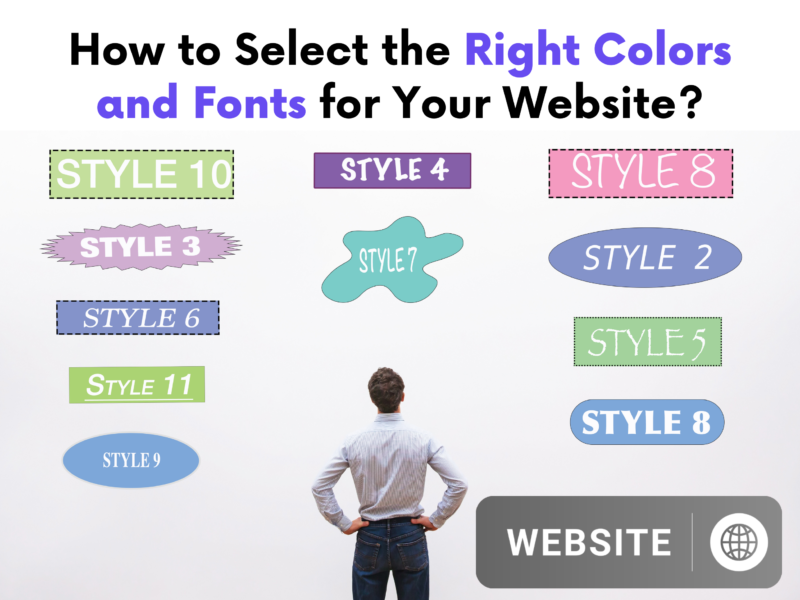When it comes to website designing, colors and fonts play a crucial role in creating a visually appealing and engaging user experience. The right combination of colors and fonts can significantly impact how visitors perceive and interact with your website. In this blog, we will discuss some essential tips and guidelines to help you select the right colors and fonts for your website, ensuring a harmonious and captivating design.
Understand Your Brand:
Before choosing colors and fonts, it’s essential to understand your brand identity and the message you want to convey. Consider your brand’s personality, values, and target audience. Are you aiming for a professional, corporate look, or a playful and creative vibe? This understanding will guide you in selecting the appropriate colors and fonts that align with your brand image.
Color Psychology:
Colors have the power to evoke emotions and create certain associations. Familiarize yourself with color psychology to leverage the desired emotional response from your website visitors. For example, blue can signify trust and reliability, while yellow can evoke energy and happiness. Choose colors that resonate with your brand values and evoke the desired emotions in your target audience.
Establish a Color Palette:
Select a cohesive color palette that consists of a primary color and a few complementary or contrasting colors. Use tools like Adobe Color, Coolors, or Color Hunt to explore various color combinations and create a harmonious palette. Ensure that your chosen colors not only match your brand identity but also create a visually pleasing contrast that aids readability and guides users’ attention.
Accessibility Considerations:
Accessibility should be a priority in web design. Ensure that the colors you select provide sufficient contrast for easy readability, especially for those with visual impairments. Tools such as WebAIM’s Color Contrast Checker can help you determine if your color combinations meet the Web Content Accessibility Guidelines (WCAG).
Font Selection:
Fonts play a significant role in shaping the overall look and feel of your website. Consider your brand’s personality and the website’s purpose when selecting fonts. Fonts can be categorized into serif, sans-serif, script, or display types. Serif fonts are often associated with a traditional or formal feel, while sans-serif fonts convey a modern and clean look. Script and display fonts add a decorative touch but should be used sparingly for readability.
Readability and Hierarchy:
Emphasize readability by selecting fonts that ensure ease of reading across various screen sizes. Steer clear of excessively ornate or complex fonts that might impede legibility. Create a distinct hierarchy by employing diverse font sizes, weights, and styles for headings, subheadings, and body text. This hierarchical structure directs users’ focus and enhances the scannability and digestibility of your content.
Consistency and Compatibility:
Maintain consistency throughout your website by using a limited number of fonts and colors. Too many different fonts or colors can create a chaotic and unprofessional appearance. Ensure that your chosen fonts and colors are compatible across various browsers and devices, providing a consistent experience for all users.
Conclusion:
Selecting the right colors and fonts for your website is a creative process that requires careful consideration of your brand identity, target audience, and accessibility. By understanding color psychology, establishing a cohesive color palette, and choosing readable fonts, you can create a visually appealing website that effectively communicates your brand message and engages your visitors. Remember, the key is to strike a balance between aesthetics and usability, ensuring an enjoyable and memorable user experience.







